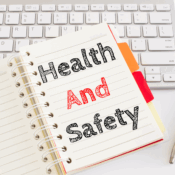
18 March 2021
How to stay on top of goods in transit damage claims
How to stay on top of Freight Liability (goods in transit) damage claims
Transport damage can be a serious issue in the haulage business. Making repeated claims on insurance can significantly increase premiums and there may be occasions when an insurer refuses to pay out, leaving the business with a significant bill. Staying on top of transport damage is essential – this will not only ensure that your costs don’t start to spiral but will also help you to identify where persistent issues are arising, that might be easily fixed.
How does goods in transit damage happen?
80% of transport damage is the result of bad planning, according to specialists. So it’s often even before the vehicle is on the road that the potential for issues has arisen. This could be something as simple as poorly stacked pallets or setting the temperature on a refrigerated unit lower than it needs to be to keep items fresh. Damage can happen out on the road as a result of poor driving but is also likely during the stages of loading and unloading, especially if this has not been properly prepared for.
How to stay on top of transport damage
1) Establish where liability lies. Blame is often placed at the driver’s door where there is transport damage. However, this is not always where there is fault. For example, if damage occurred during the process of unloading but the driver was not allowed to be present, then liability should pass to whoever handled the unloading. It may be that goods in pallets were not properly packed for transit or that temperature controlled goods were too hot before they even entered the vehicle. In order to ensure that you’re not covering the cost of damage you’re not actually responsible for, it’s crucial to establish where liability lies.
2) Work with a surveyor if you feel that liability is being unfairly forced onto you. A surveyor will come straight to the location where the issue occurred and make an assessment of the likely causes of any transport damage. If you don’t want to involve a surveyor, then make sure there is a record of exactly what happened on the delivery note and, if necessary, that photos are also taken.
3) Be aware of the duty to minimise costs. If damage has already occurred, then your driver will have a responsibility to take steps to ensure this doesn’t escalate. Any actions that increase the cost of the damage could make it more likely that the responsibility to pay for it will fall to you.
4) Train your drivers well. From having the confidence to insist on being present during loading or unloading, to being able to stop and record what happened, or to take photos under stressful circumstances, drivers can be key to ensuring that transport damage costs don’t escalate. Training drivers so that they have the necessary information to respond in the right way is essential.
Staying on top of transport damage is key – it can keep costs down and also ensure that incidents don’t result in reputational damage.
Go to our Transport page to see how we can assist you HERE
Read more of our blogs:
What are the effects of moving goods in the EU post-Brexit?
Delays in road traffic accident claims
Have any questions? please don’t hesitate to contact one of our team
Matt.price@ascendbrokingold.co.uk | Office: 01245 449062 | Mobile: 07841 020712






